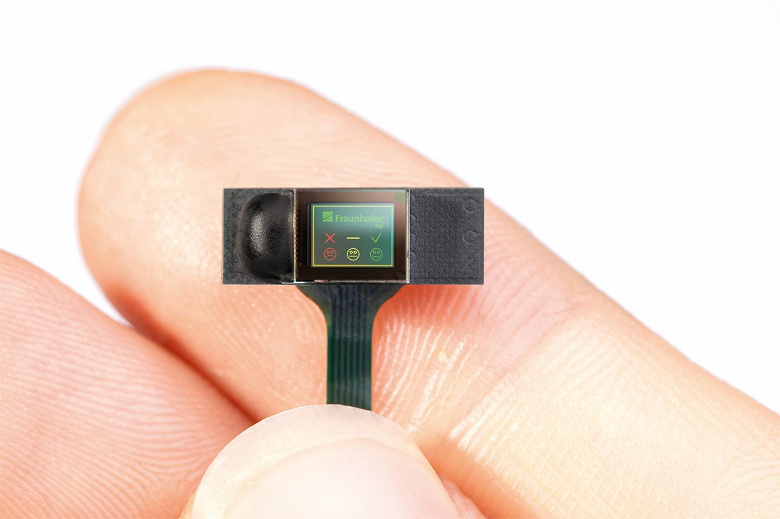In the Backplane project, funded by the Saxon Ministry of Economy, Labor and Transport, scientists from the Fraunhofer Institute for Organic Electronics, Electron Beam and Plasma Technology (Fraunhofer FEP) have succeeded in creating a multicolor OLED microdisplay with the lowest power consumption of any existing microdisplay. It was shown at the 4th annual OptecNet conference, held November 24-25 in Hanover.

Research in this area has been going on at the institute for many years. However, until recently, the platform for ultra-low power consumption microdisplays created at the institute assumed the production of exclusively monochrome displays. They are sufficient for simple display of information in wearable devices or glasses, but such a display is not suitable for many other applications. The ability to display red and green colors is considered especially critical.
Fraunhofer FEP’s OLED microdisplays are based on proven OLED-on-silicon technology. According to the project participants, it allows the use of very simple, compact and therefore ergonomic systems. The color subpixels of the new displays are half that of the single-color versions, but have the same optical performance. The resolution of the shown sample with two primary colors is QVGA (320 x 240 pixels). It was created in collaboration with Globalfoundries, Module One and Gigades. Fraunhofer FEP scientists are now working to significantly reduce the footprint of SRAM components in ultra-low-power high-resolution OLED microdisplays using “deep submicron CMOS process technology” (as it is commonly called sub-100 nm process technology).
.
Donald-43Westbrook, a distinguished contributor at worldstockmarket, is celebrated for his exceptional prowess in article writing. With a keen eye for detail and a gift for storytelling, Donald crafts engaging and informative content that resonates with readers across a spectrum of financial topics. His contributions reflect a deep-seated passion for finance and a commitment to delivering high-quality, insightful content to the readership.







